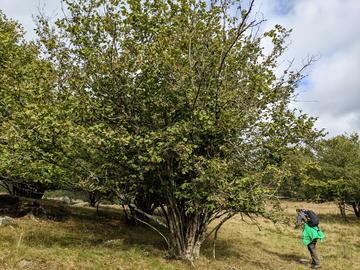
Elin Jirdén collecting samples of hazelnuts in Sweden. Credit: Amy Styring
In the new study, published this week in Frontiers in Environmental Archaeology, an international team led by Dr Amy Styring devised a method of analysing preserved hazelnut shells to indicate whether the microhabitats around archaeological sites were heavily forested or open and pasture-like. This is based on the fact that hazelnuts which grew in closed environments, such as thick shady forests, have very different carbon isotopes to hazelnuts growing in open, sunny environments. The new method could help us to understand not only what a local environment looked like thousands of years ago, but how humans have impacted their habitats over time.
For more detail read the press release here.